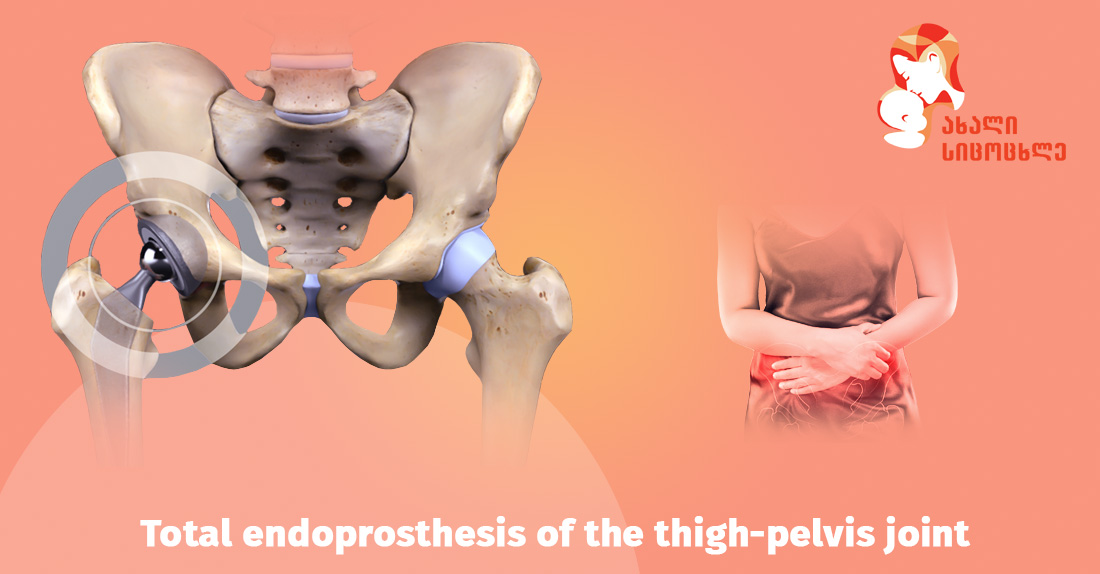
The advantages of total pelvic-femoral endoprosthesis adopting dual mobility endoprosthesis
Endoprosthesis is a high-tech therapeutic approach that involves replacing the injured joint with new material (implant), during which the yogic machinery of the joint is preserved and, as a result, it operates correctly.
A traumatologist at the „New Life” Clinic, Mikheil Periashvili, discusses dual mobility in endoprosthetics.
-What exactly is endoprosthesis, and what does the term new approaches imply?
-It is the replacement of any diseased human joint with an artificial joint in orthopedics, and the modern approach focuses on restoring the patient's capacity to function as soon as possible, at the expense of lowering surgical risks and subsequent complications.
-When is an endoprosthesis required?
-When conservative treatment is inadequate and the function of the lower leg is damaged, accompanied by severe discomfort and restriction of joint movement, treatment with this method is required. The condition described above is caused by both severe damage and chronic progressive disorders such as joint arthrosis and osteoporosis.
-Can you tell us about the different types and components of endoprostheses?
-Depending on the location and type of pathology, different forms of the prosthesis can be employed. To treat pelvic-osteoarthritis (coxarthrosis), for example, standard or dual mobility endoprostheses consisting of a chemically and biologically inert metal alloy such as titanium and stainless steel are employed. In addition, some prosthesis components are comprised of ceramic and high molecular weight polyethylene, which decreases wear and increases the so-called prosthesis life expectancy.
-Which clinical trials are conducted for diagnosis?
-To diagnose skeletal system diseases, radiographic examinations are conducted such as:
- X-ray;
- Computed tomography;
- Densitometry.
Magnetic resonance imaging may also be used to detect aseptic bone necrosis. (At this point, the dead region of the bone is slowly absorbed, and scar tissue forms in its stead, leading to femoral aseptic necrosis. Such alterations are particularly common following the commencement of Pertussis disease, in adulthood, and throughout the post-traumatic period.
-In what cases is it necessary to use an artificial joint?
-Replacement of any joint with an endoprosthesis is required if the patient's capacity to work is impaired, which has a substantial impact on the socialization process. One of the primary goals of these surgeries is to restore the limb's musculoskeletal function as well as to re-socialize the patient. After surgery, the patient is able to resume employment and regular activities without pain or restrictions.
-What is a dual mobility implant?
-A modern model of the pelvic-femoral joint prosthesis is the double mobility implant. When compared to a typical mobility prosthesis, it allows for a greater amplitude of lower limb movement and reduces the likelihood of it falling. A dual mobility endoprosthesis, as opposed to a standard prosthesis, improves the range of motion of the joint to 187 degrees, whereas a typical prosthesis is limited to a 90-degree angle. With this convenience, patients are no longer forbidden from refraining from motions such as:
- Sitting on a low chair;
- Climbing or descending stairs;
- Exercising and walking over an extended period of time;
- Sports activity;
- Rotation.
-Does the patient require preoperative endoprosthesis preparation?
-For surgical intervention, standard preoperative preparation is required. All laboratory and radiographic investigations required to determine the patient's overall health are performed:
- General blood test;
- General analysis of urine;
- Determination of blood glucose;
- Infections (hepatitis test, HIV infection);
- Electrocardiogram.
Patients should also refrain from eating or drinking after 20:00 hours before surgery, fluids after 24:00 hours, and alcohol after 72 hours; antithrombotic prophylactic therapy is administered prior to the operation. Patients who require the involvement of cardiologists, neurologists, or other specialists should have a preoperative consultation.
-How long does the patient stay at the clinic, and how long is the rehabilitation period?
-A standard postoperative period of 5 days is required following pelvic-thigh and knee endoprosthesis. The patient begins to activate and walk independently inside the ward on the third day after surgery, while additional rehabilitation takes place in an outpatient setting under the care of a physician.
-What is the average lifespan of a dual mobility implant?
-A dual mobility implant has an average lifespan of 20-25 years. Furthermore, it is critical to know how well the patient will adhere to the doctor's recommendations throughout the early postoperative period and after surgery! Following a pelvic-femoral endoprosthesis, all patients will be provided a list of critical guidelines to consider.
You will benefit from numerous discount promotions at the „New Life” Clinic, which will help you to discover pathology promptly and choose additional treatment methods.
Contact us at (032) 2 12 25 25 or (+995) 577 059 900! Wish you health!







